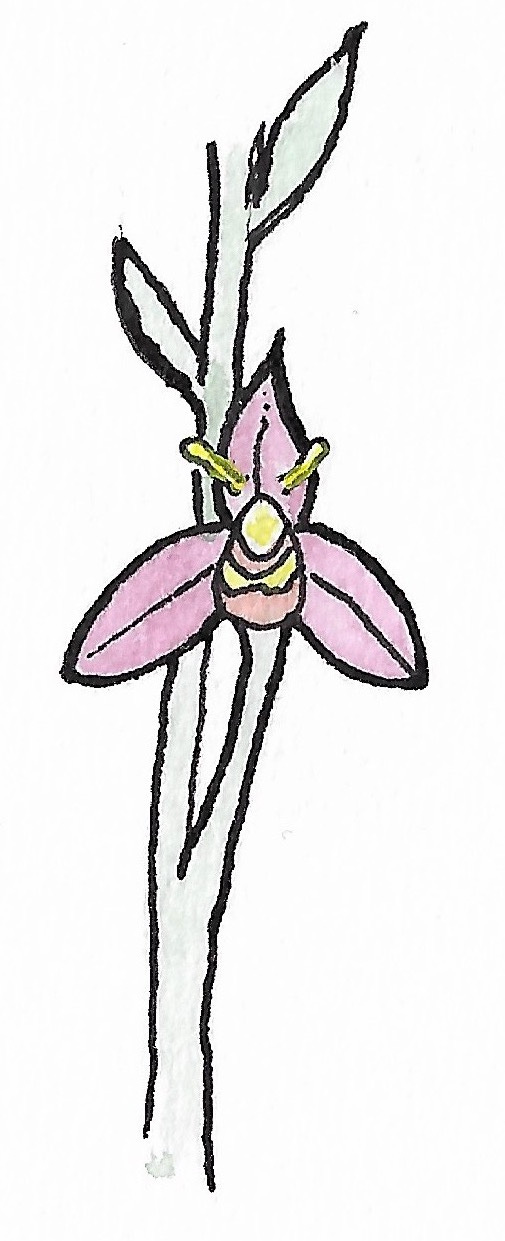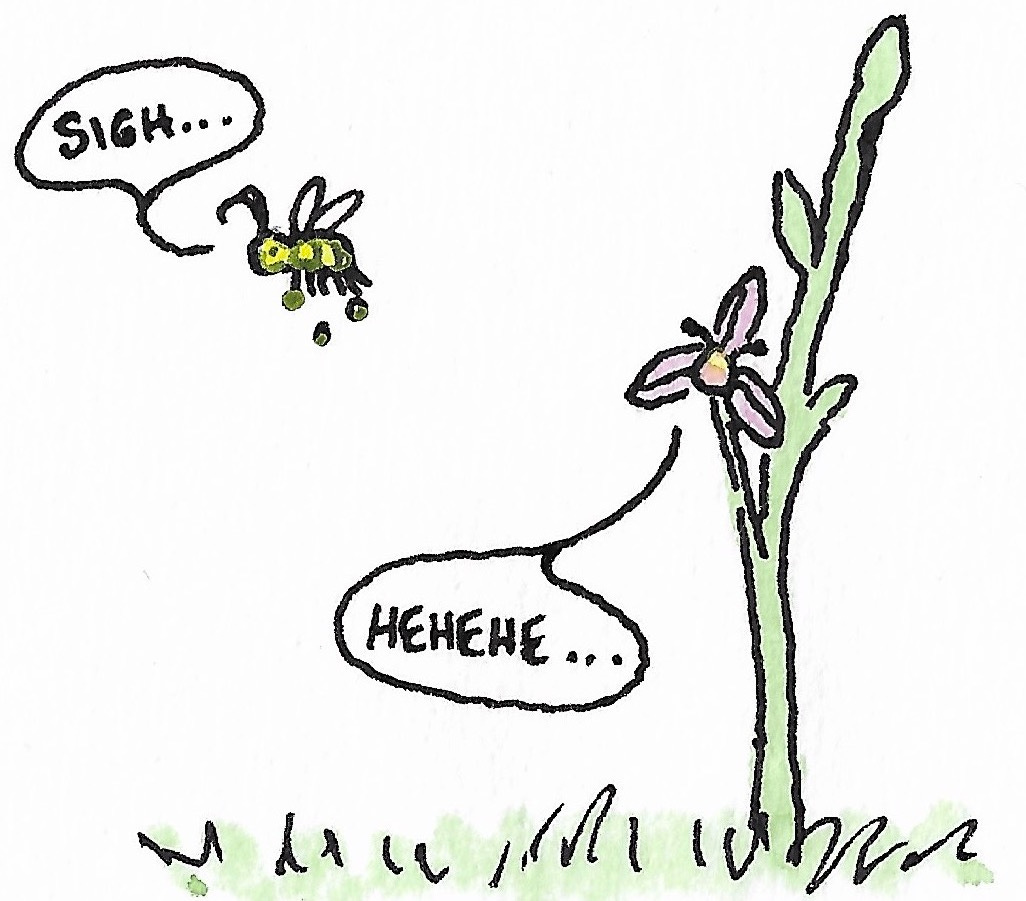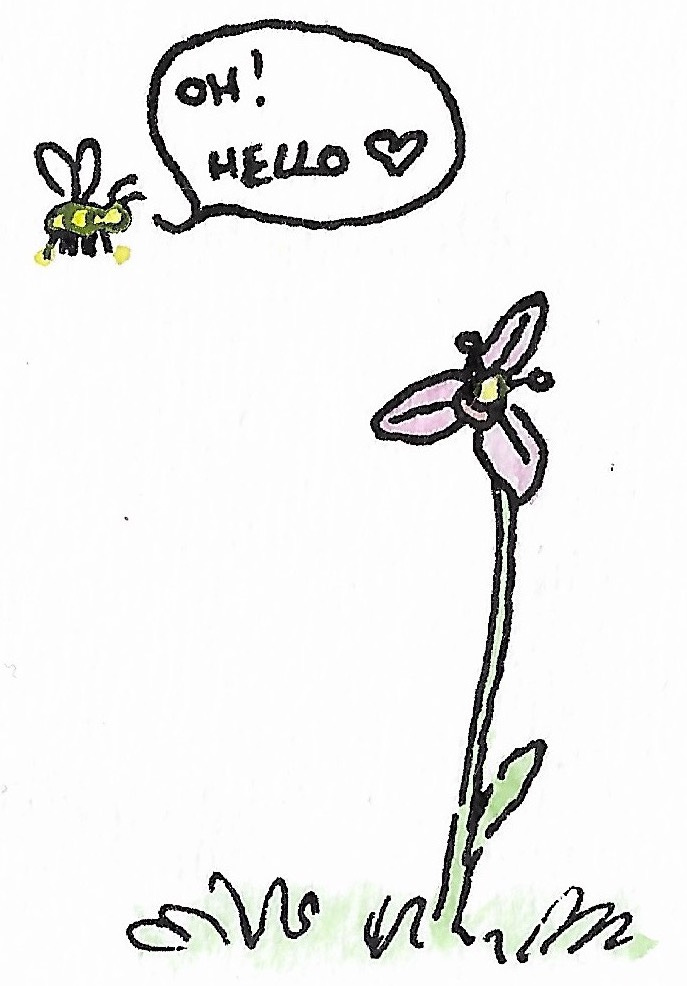Flowers have a strange relationship with their pollinators.
You would think that, given how pollination works, its evolution would have been driven by cooperation between plants and pollinators. Bees and bats and flies and moths and birds come for the nectar and leave with some pollen — seems like a win-win situation.
And yet many of the relationships between animals and the plants they pollinate seem more fraught than what I just described. For example, let’s look at the bee orchid.
The bee orchid is, as you may have guessed, a kind of orchid. It’s very pretty, with light purple petals staggered on a yellow-green stem. In the center of the petals there’s a sort of reddish-brown ball, for lack of a better term (I’ll draw it so you get a better idea), and some stamens with fluffy yellow tips.
If you looked at it, you would probably think, “Huh, that’s an unusual but nice flower,” and move on with your day.
A male bee, however, will see it and think, “Oh! Another bee! Let me court her and we shall be happy together.”
At which point he would climb onto the flower and attempt to mate with it.
Naturally, this does not result in anything particularly exciting for him, and so, disappointed in his amorous endeavors, would fly off in search of a more receptive partner.
The orchid, on the other hand, will have fulfilled its mission, as the pollen that got stuck to the bee is now firmly on its way to another flower.
Now, a quick break to explain my favorite part of this whole thing: the way evolution works is that traits, behaviors, reproductive strategies, etc. all need to work for them to exist. If a flower’s pollination strategy doesn’t work, it won’t exist for very long, because the flowers who tried it will not have been able to reproduce, and there ends that particular line of flowers.
Knowing this, we can assume that the bee-trickery must work. And for pollination to work, it means the pollen from the first plant must have gotten to a second plant via pollinator.
Which means the bee who got tricked by the bee orchid must have ended up on a second bee orchid to spread the pollen.
Which means it needs to have been tricked by the second bee orchid, too.
Which I find hilarious.
So, moral of the story: nature doesn’t have any morals, as far as we can tell, and I don’t think the flowers feel particularly remorseful about any of this.
The End.
Some of this information came from a lecture I attended in university and have no idea how to cite; however, here’s a very short description of the bee orchid with some pictures, in case my photorealistic style failed to properly convey how it looks.








